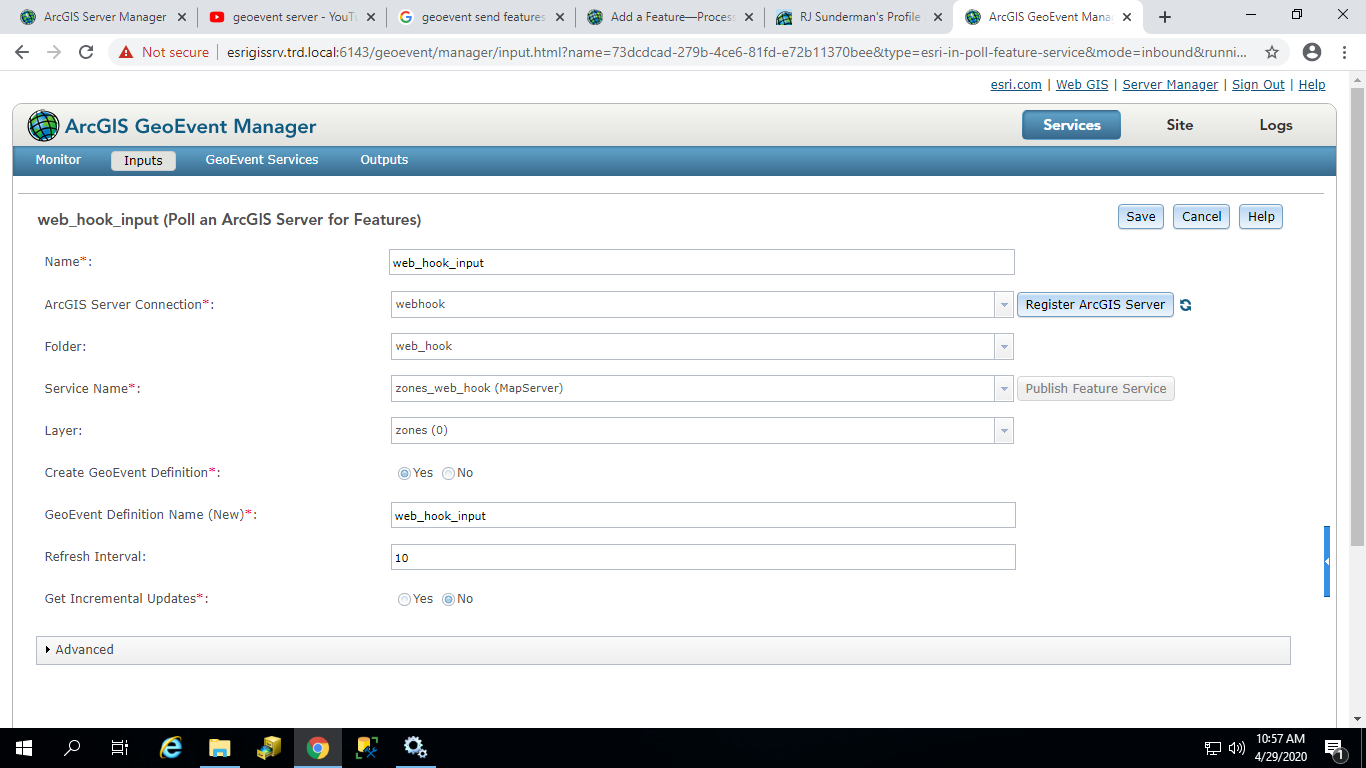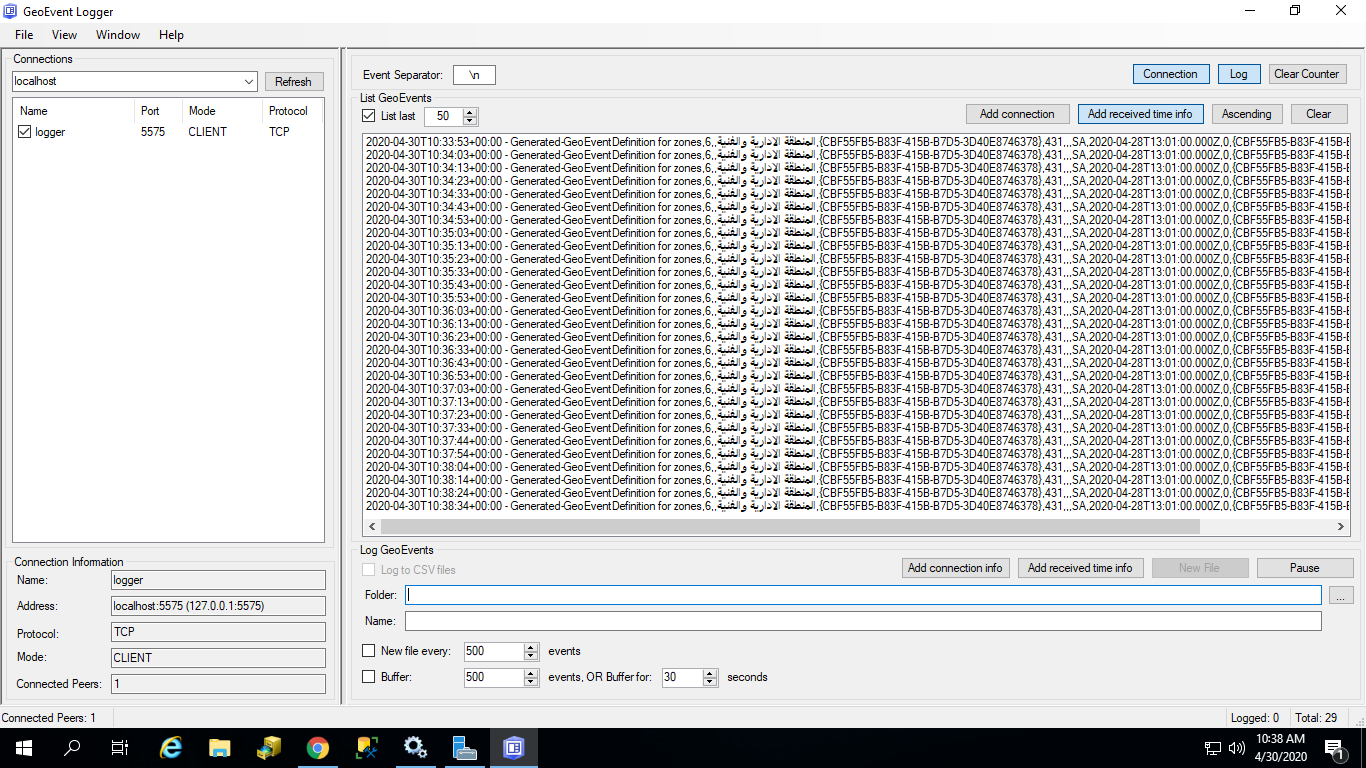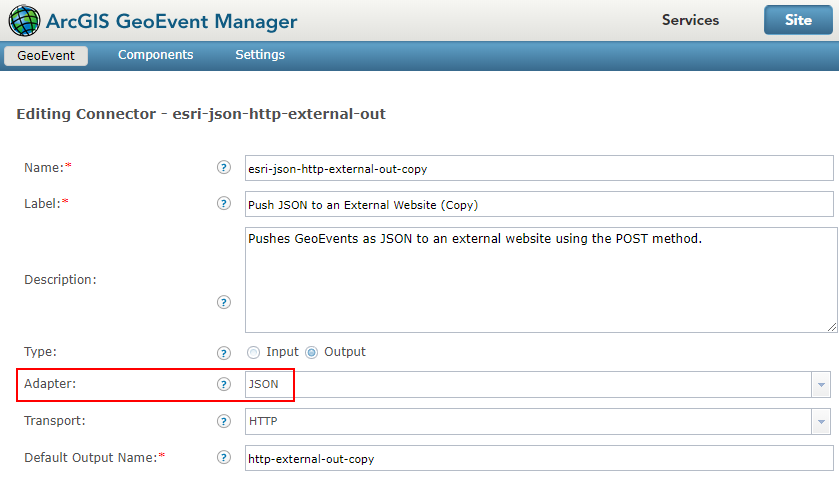- Home
- :
- All Communities
- :
- Products
- :
- ArcGIS GeoEvent Server
- :
- ArcGIS GeoEvent Server Questions
- :
- Models-This is Result-Thanks.
- Subscribe to RSS Feed
- Mark Topic as New
- Mark Topic as Read
- Float this Topic for Current User
- Bookmark
- Subscribe
- Mute
- Printer Friendly Page
Models-This is Result-Thanks.
- Mark as New
- Bookmark
- Subscribe
- Mute
- Subscribe to RSS Feed
- Permalink
Dears, I want to send only one Feature, but every time I send a push services , this Feature will repeat within the environment side that I am sending to . I want to send the features inside the spatial database without repeating it when sending it.
These are the steps that I implement.
I m using geoevent 10.7.1.
the in put connector ( Poll an ArcGIS Server for Features)
the out put connector (Push JSON to an External Website) not using any filter or process.
This is in put . 
Geoevent Services

out put connectors

This is Result data duplicated
 Thanks.
Thanks.
- Mark as New
- Bookmark
- Subscribe
- Mute
- Subscribe to RSS Feed
- Permalink
Hey Abdelhalim Ibrahim
If I understand your question correctly, you would like the output to recognize that each event is a duplicate of the previous one and not send that event. Unfortunately, the OOTB Push JSON to External Web Site does not implement any mechanism to determine if an event is unique or not. Thus, if you have 5,562 events in your input, it will write 5,562 events to your output.
The easiest solution would be to deploy the Updates Only Processor and insert that between your input and output. This processor will drop any event with a TRACK_ID+timestamp that is identical to a previous event.
If you have some control over the website you are pushing data to and can accomodate an updated JSON schema, you can create your own GeoEvent Outbound Connector that uses the [Feature] JSON Outbound Adapter (not the Generic JSON Adapter) combined with the HTTP REST Outbound Transport. The Feature JSON Outbound Adapter will utilize the event's TRACK_ID to determine if the event is unique or new (within the update interval setting).
The easiest way to to do this is to make a copy of the existing Push JSON to Exernal Web Site, change the adapter to JSON, and update the parameter/properties appropriately:

Unfortunately your JSON format will change to the Esri Feature Set JSON format (see JSON response example (returnIdsOnly=false and returnCountOnly=false) here).